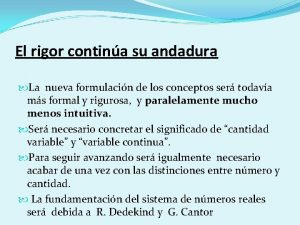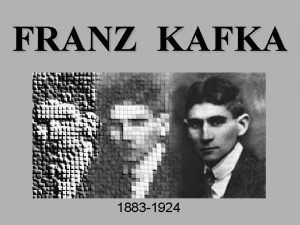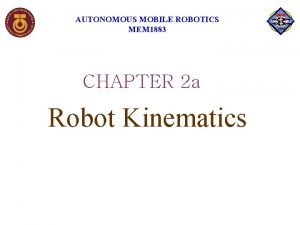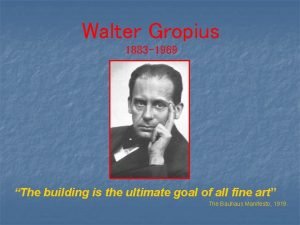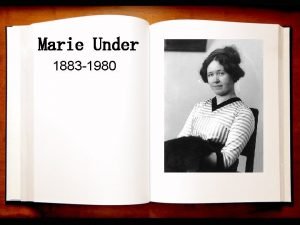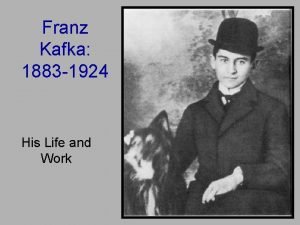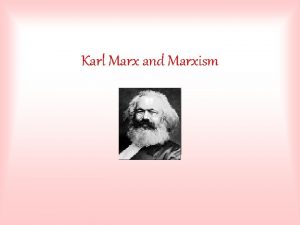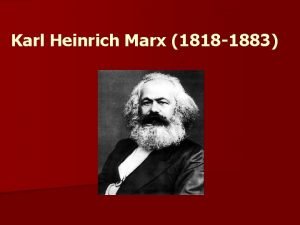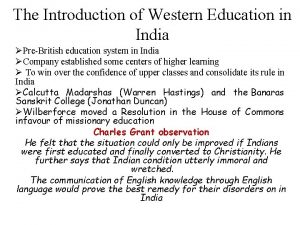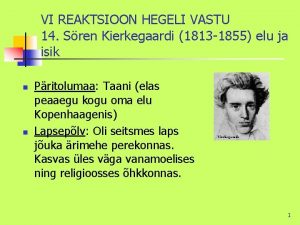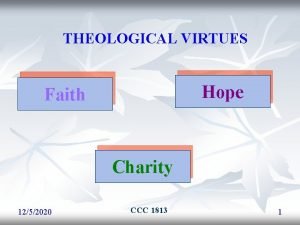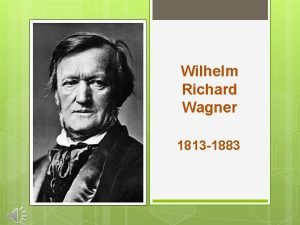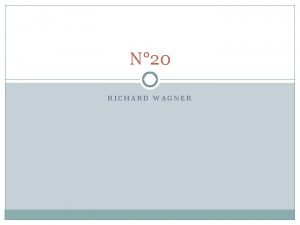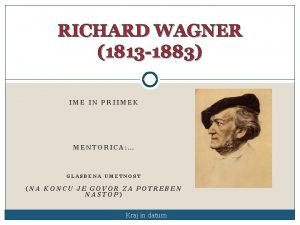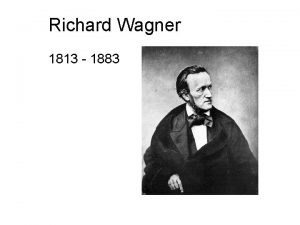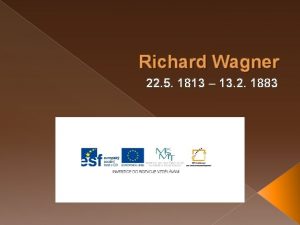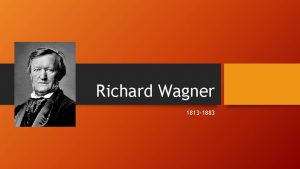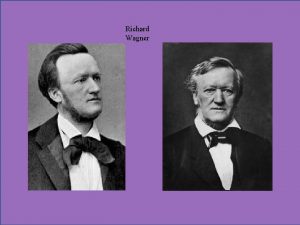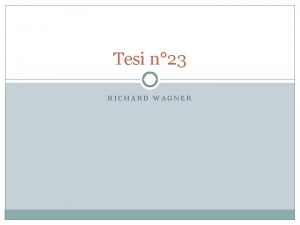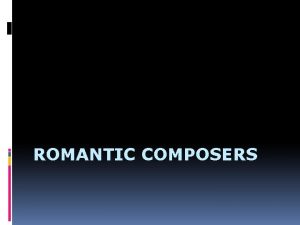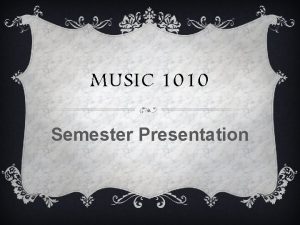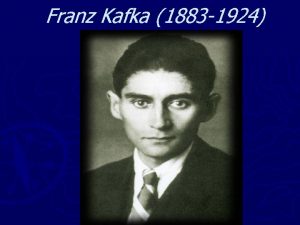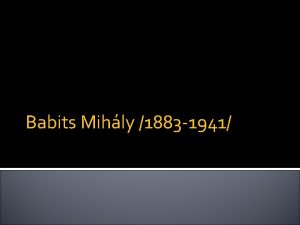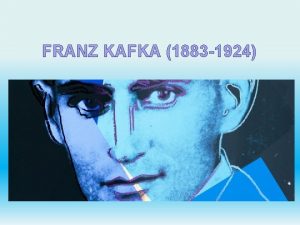Wilhelm Richard Wagner 1813 1883 Richard Wagner 1813
















- Slides: 16

Wilhelm Richard Wagner 1813 -1883

Richard Wagner (1813 -1883) Charles Baudelare said “His is the art of translating, by subtle gradations, all that is excessive, immense, ambitious in spiritual and natural mankind. On listening to this ardent and despotic music one feels at times as though one discovered again, painted in the depths of a gathering darkness torn asunder by dreams, the dizzy imaginations induced by opium”. When it comes to opera, no composer was as loved, and despised, as the great Richard Wagner. Even today, the mention of his music sparks intense discussion. There is no question among scholars as to his genius, but in his unrelenting belief that he was right

in his approach to opera and that basically everyone else was the scum of the earth. This really sparks anger in the devotees of Giuseppe Verdi, Giocomo Puccini, and Italian Opera (Ferrin chapter 26). His full name was Wilhelm Richard Wagner. He was born on May 22, 1813, in Leipzig, Germany. It is not very clear; who was his father? Maybe Friedrich Wagner police actuary, who died soon after Wilhelm was born, or his father was the man he called stepfather, the painter, actor and poet Ludwig Geyer. In August 1814, Richard's mother married him. His early childhood was in Dresden where he attended school. There was no show in aptitude in music but Wagner was ambitious from a young age.

Even his teacher said, “He would torture the piano in a most abominable fashion”. When he was 11 years old, he wrote his first drama. Later on by age 16, he was writing musical compositions. As a young person Wagner was so confident. The New York Times would later write in its obituary of the famous composer, “In the face of mortifying failures and discouragements, he apparently never lost confidence in himself. ”

The next step in a Wagner's education was in the University of Leipzig in 1831, and his first symphony was performed in 1833. His inspiration was Ludwig van Beethoven and Wagner called his Ninth Symphony, “That mystic source of my highest ecstasies”. His was the first opera: Die Feen (The Fairies) he wrote the text and music but it was not staged. Wagner married the singer and actress Minna Planer in 1836. Their life went from Konigsberg to Riga, Russia, then London and Paris. In Konigsberg he was the musical director at the Magdeburg Theatre. Das Liebesverbot was produced in 1836, with his writing the lyrics and the music what he called “Gesamtunkstwerk” (total work of art). In Russia he was the first musical director of theater and started work on his next opera, Rienzi. Before finishing the opera they left Riga, fleeing creditors, in 1839. After London they stopped in Paris, where Wagner was forced to work whatever he could find, like writing vaudeville music for small theaters. He was a member of the quasi-revolutionary “Young Germany” movement and his politics were reflected in Rienzi which the score he sent to the Court Theatre in Dresden, Germany, where it was accepted. In 1842, Wagner's Rienzi, a political opera set in imperial Rome, premiered in Dresden to great acclaim (web. biography. com).

In 1842 Wagner returned to Germany, settling in Dresden then he had to flee Dresden in 1849 because of the Revolution, which was unsuccessful, against the German monarchy. After that he settled in Switzerland, first in Zurich and then near Lucerne. He was banished from Germany and had not access to German theatrical life. Over two decades he worked on the Ring. Wagner received permission to reenter Germany in 1860. He was only banished from one area in eastern Germany, Saxony. The full amnesty (political freedom) he got in 1862. The first entire Ring cycle ( Rheingold, Walkure, Siegfried, and Gotterdammerung ) was given at the Festspielhaus, the shrine Wagner built for himself at Bayreuth, in 1876, over thirty years after the idea, for it had first come to mind. He finished Parsifal, his final drama, in 1882 (web. notablebiographies ).

The success of his operas, after “Gesamtkunstwerket, ” or “the total work of art” was in the use of Leitmotif. It is a musical statement that represents a character or concept in the opera. The concept “chromaticism” is associated with his work where he did substitute nondiatonic (notes outside the key) for Diatonic pitches, which created fluidity between tonal centers. This harmonic technique increased the emotionalism of his opera. Wagner referred to his productions as “music dramas, ” rather than the term opera; the libretto ( which he wrote himself ), the story, the scenery, painting, costuming, and orchestra were equally as valid to the total presentation. This is different than opera in Italy mostly a singing art ( Ferrin “Listen to the Music” ). Wagner's music has been used in film and cartoons and he was a favorite of Adolf Hitler. His music was played at the Dachau concentration camp to “re-educate” the prisoners and his works were full of German stories and nationalism. Wilhelm Richard Wagner died of a heart attack on February 13, 1883, at age 69, while vacationing in Venice, Italy for the winter. His body was shipped by gondola and train back to Bayreuth, where he was buried ( web. biography. com ).

I agree with what Mark Twain said, “I have been told that Wagner's music is better than it sounds. ” But I am so excited to share this quote about his music that touched deeply my soul. It came from German composer, Richard Strauss in writing of Wagner's opera Siegfried in an 1879 letter to Ludwig Thuille. Strauss said “It would kill a cat and turn rocks into scrambled eggs. ” I do believe that Wagner was one of the most important figures of nineteenth-century music.


Rienzi, der Letzte der Tribunen ( Rienzi, the Last of the Tribune ) The title is commonly shortened to Rienzi. It is in five acts, with the libretto written by the composer after Bulwer-Lytton's novel of the same name (1835). The opera is set in Rome and is based on the life of Cola di Rienzi (1313 -1354), a late medieval Italian populist figure who succeeds in outwitting and then defeating the nobles and their followers and in raising the power of the people. Wagner composed his opera Rienzi between August 1838 and November 1840; the overture was finished on October 23, 1840. The opera was first performed on October 20, 1842, in Dresden. The overture is scored for two flutes and piccolo, two oboes, two clarinets, two bassoons and contrabasson (originally serpent), four horns, four trumpets, three trombones and tube (originally ophicleide), timpani, snare drum, tenor drum, bass drum, cymbals, triangle, and strings ( Huscher, Chicago Symphony ). Rienzi was Wagner's first significant operatic success, following the earlier Die Feen and Das Liebesverbot. The plot, with its championship of the citizens against the nobility,

political partisanship with which the composer concurred, was calculated to appeal to Paris, but when no performance there proved possible, Wagner offered it to Dresden, where it at first proved impossibly long with a first performance that lasted some six hours. Later cuts reduced the work to more manageable proportions The overture remains particularly well known, while vocal excerpts that may be heard in the concert-hall include Rienzi's declaration to the people of Rome Erstehe, hohe Roma, neu! (Arise, great Rome, anew!), Adriano's divided loyalties in Gerechter Gott! (God of justice!) and, best known of all, Rienzi's prayer Allmächt'ger Vater! (Almighty Father!), theme of which is heard in the overture. Rienzi was the greatest popular success of Wagner's career, and work that made him popular almost overnight. He admitted that the work gave no hint of his ultimate significance as a composer-”in it there is not yet evident any important instance of the view of art which I later came to assert. ”

With its sequence of prayer and march, this music is a powerful Wagner prototype, combining the rapt introspection of a penitent with the militaristic strut of an army. It embodies an idealized historical personality -- in the opera, Cola Rienzi wrests authority from a corrupt Roman oligarchy -- whose patriotic mission inspired not only Wagner but also Hitler. The ''Rienzi'' was the musical theme for Hitler's Nazi Party rallies ( Horowitz, NY Times). Wagner's Rienzi is rearly performed and hardly ever has produced by major companies Paul Driscoll, editor-in-chief of Opera News gives simple reasons why we never see it in production: Wagner was not proud of it, Hitler owned the autographed score, the title role is murder, the best female aria goes to a minor character, it is too long. However, nothing left than a quote about his music from German composer Strauss that he said, “It would kill a cat and turn rocks into scrambled eggs. ”

Overture to Rienzi A minute by minute review of the opening overture is as follows: The entire overture is gradual crescendo but it is actually a series of crescendos, gradually building to a final march, almost triumphal although the battle has not yet begun. 0: 0 A single trumpet call to war, soft, no vibration, as in the distance, steady B natural, a slight crescendo, then decrescendo. 0: 14 A second trumpet call. Slightly louder, steady then decrescendo. 0: 35 The strings enter. Slow, steady but intense. 0: 60 Third trumpet call. This time growing louder into a crescendo and not fading away. 1: 10 Low strings building, growing, still slow and soft but growing in intensity. 1: 42 Then enter all of the strings into the most beautiful melody you can imagine with also a beautiful harmony. You might wonder how this might be part of a war call, perhaps there is an effort here to describe the beauty of the

of the surrounding scenery. 2: 50 Full strings, enter bass as the dynamics of the orchestra continues to grow. 3: 45 Full orchestra. Counter melody between brass and strings, with timpani added. 5: 00 Drum roll as the intensity continues to build. 5: 19 Trumpet call again, louder, with the entire trumpet section, same note, concert B natural, no vibrato, straight tone. 5: 45 Full loud orchestra in a march melody. 6: 00 Faster with more brass and trumpet fanfares, exciting. Key changes which add to the building excitement. When you think there is no where else to go it just continues to build. 6: 40 Suddenly softer and melodic. 7: 00 New joyful melody, happy sounding, almost like a waltz style in ¾ timing. 8: 10 Cymballs crashing, faster, more brass fanfares, especially trumpets but supported by french horns and trombones. Fast chromatics by the strings. 9: 28 More trumpet calls followed by fast runs from the strings supported by a lot of percussion in a march style.

11: 00 Faster and louder. More exciting. More brass percussion. Short moments of melody interrupted again by fanfare and then again march style with a lot of timpani. 11. 24 At times there are two melodies going at the same time. However, at the end, the entire orchestra, comes together in unision for the maximum effect especially maximum dynamic volume. 13: 00 After several final strokes, it is finished. Act one is ready to begin.

Works Cited Ferrin, E. Craig. “ Listen to the Music” chapter 26; 19 th Century Opera Reading & Quizzes http: //slcc. grtep. com/index. cfm/musicappreciation/page Henry, T. Finck. “ Wagner and His Works: The Story of His Life Critical Comments” Reading & Quizzes http: //slcc. grtep. com/index. cfm/musicappreciation/page Horowitz, J. Joseph. “ The Specter of Hitler in the Music of Wagner” The New York Times newspaper November 8, 1998. Huscher, P. Philip. “ Wagner's Overture to Rienzi” The Chicago Symphony Orchestra record 1999 with Daniel Barenboim Kisija, M. Haris; “Concert Review # 5” 04/05/2015 My work. Lee, M. Owen. Wagner: “The Terrible Man and His Truthful Art” Toronto: University of Toronto Press, 1999. Web. http: //www. notablebiographies. com/Tu_We/Wagner-Richard Encyclopedia of World Biography- Richard Wagner Biography
 Biografia de julius wilhelm richard dedekind
Biografia de julius wilhelm richard dedekind Aulasystem
Aulasystem 1883-1924
1883-1924 Bertrand 1883
Bertrand 1883 Robots in 1883
Robots in 1883 Walter gropius 1883-1969
Walter gropius 1883-1969 Annie marie adson
Annie marie adson Valli kafka
Valli kafka Karl marx 1818 to 1883
Karl marx 1818 to 1883 1883-1924
1883-1924 1883-1818
1883-1818 Introduction of western education
Introduction of western education Businesses that accenture delivery suite(ads) support
Businesses that accenture delivery suite(ads) support Taani filosoof 1813-1855
Taani filosoof 1813-1855 Ccc 1813
Ccc 1813 Richard wagner parents
Richard wagner parents The tristan chord
The tristan chord
